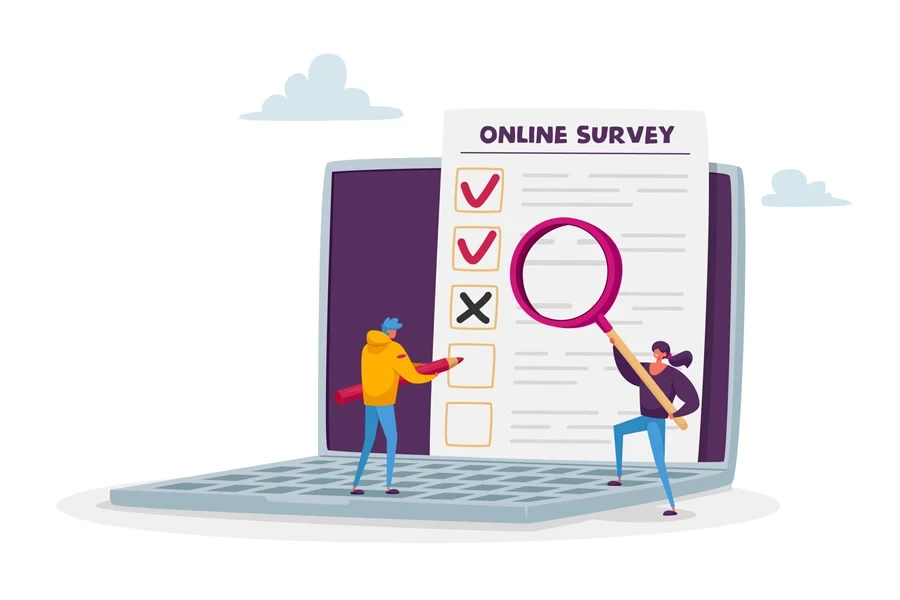Whether you’re a seasoned entrepreneur or just starting out, the success of your business hinges on your ability to connect with your customers on a deeper level. After all, satisfied customers are critical for any successful business. So, understanding your target audience is vital to your business’s success.
Here, we’ll explore the importance of gaining a deeper understanding of your target audience and provide actionable tips to help you do just that. By the end, you’ll have the knowledge and tools necessary to build stronger relationships with your customers, boost brand loyalty, and drive sustainable growth for your business.
Table of Contents
Why understanding your target audience matters
Steps to gain a deeper understanding of your target audience
Final thoughts
Why understanding your target audience matters
Before we delve into the how-to aspect of understanding your target audience, let’s first understand why gaining a deeper understanding of your target audience is essential for your business’s success.
- Tailored marketing strategies: Knowing your audience allows you to tailor your marketing strategies to their specific needs, preferences, and pain points. This targeted approach increases the effectiveness of your marketing efforts and maximizes your return on investment.
- Improved product development: By understanding your audience’s wants and needs, you can develop products or services that resonate with them, leading to higher satisfaction rates and increased sales.
- Enhanced customer experience: A deep understanding of your target audience enables you to provide a personalized and seamless customer experience, fostering stronger relationships and brand loyalty.
- Competitive advantage: Businesses that understand their audience better than their competitors gain a significant competitive advantage by delivering what customers really want. This allows you to differentiate your brand and stand out in a crowded market.
Steps to gain a deeper understanding of your target audience
Now that we’ve established the importance of understanding your target audience, let’s explore how you can achieve this.
1. Conduct market research

Start by conducting comprehensive market research to gather data on your target audience’s demographics, preferences, behaviors, and pain points. Utilize both quantitative and qualitative methods, such as surveys, interviews, focus groups, and data analysis, to gain valuable insights.
Quantitative research involves gathering numerical data through surveys, questionnaires, and analytics tools to uncover broad trends and patterns within your target audience. On the other hand, qualitative research involves in-depth exploration through interviews, focus groups, and observational studies to gain deeper insights into attitudes, motivations, and behaviors.
2. Create buyer personas

Buyer personas are fictional representations of your ideal customers based on real data and insights. According to a study by Cintell, companies with well-defined buyer personas are 2–5 times more likely to exceed their revenue goals and achieve higher customer satisfaction rates.
When creating buyer personas, gather information on demographics (age, gender, location), psychographics (values, interests, lifestyle), goals, challenges, and purchasing behaviors. This holistic approach allows you to develop personas that accurately reflect the diverse needs and preferences of your target audience.
For instance, a software-as-a-service (SaaS) company targeting small businesses may create personas such as “Small Business Owner Sarah” and “Startup Founder Mike.” Sarah may prioritize ease of use and affordability, while Mike may prioritize scalability and integration capabilities.
3. Listen and engage on social media

Social media platforms are invaluable sources of real-time customer insights. According to Statista, there were 4.59 billion social media users worldwide in 2022, and this number is projected to reach six billion by 2027, highlighting the vast potential for businesses to engage with their target audience.
To gain deeper insights, actively monitor conversations, engage with your audience, and respond to comments, messages, and reviews. Social listening tools like Sprout Social and Hootsuite allow you to track brand mentions, relevant keywords, and sentiment analysis to uncover trends and sentiments within your target audience.
4. Analyze website and customer data

Your website is a treasure trove of data that can provide valuable insights into your target audience’s behavior and preferences. Utilize web analytics tools like Google Analytics to track metrics such as page views, bounce rates, conversion rates, and user demographics.
You can identify popular pages, navigation patterns, and conversion funnels by analyzing website data to optimize the user experience and drive desired actions. Additionally, leverage customer data such as purchase history, interaction patterns, and feedback to tailor your offerings and marketing strategies.
For instance, an e-commerce retailer may analyze website data to identify high-performing product categories, popular search terms, and cart abandonment rates. By understanding customer behavior, businesses can optimize their website layout, product assortment, and promotional strategies to enhance the overall shopping experience.
5. Conduct surveys and feedback sessions

Regularly solicit customer feedback through surveys, feedback forms, and feedback sessions.
Surveys and feedback sessions provide direct avenues for gathering insights from your target audience. According to a study by SurveyMonkey, 89% of marketers say that customer feedback influences their decision-making process.
When designing surveys, keep them concise, relevant, and focused on gathering actionable insights. Ask open-ended questions to encourage detailed responses and uncover underlying motivations and preferences. Additionally, consider conducting feedback sessions or interviews to delve deeper into specific topics and pain points.
6. Stay up-to-date on industry trends
Keep abreast of industry trends, market dynamics, and emerging technologies that may impact your target audience. Attend industry conferences, read industry publications, and follow thought leaders in your field to stay informed and ahead of the curve.
Networking events, industry conferences, and local meetups provide opportunities to connect with potential customers and industry peers. Attend relevant events, participate in discussions, and engage in conversations to gain insights into your target audience’s challenges, aspirations, and interests.
7. Monitor competitors
Competitor analysis provides valuable insights into your target audience’s preferences, behaviors, and perceptions. Analyze your competitors’ marketing strategies, product offerings, and customer feedback to identify gaps and opportunities in the market.
Keep an eye on your competitors and their interactions with their target audience. Analyze their marketing strategies, product offerings, and customer feedback to identify gaps and opportunities you can leverage to better serve your audience.
Final thoughts

Understanding your target audience is not a one-time task but an ongoing process that requires dedication, attention, and adaptability. By investing the time and effort to gain a deeper understanding of your audience, you’ll be better equipped to meet their needs, exceed their expectations, and ultimately drive sustainable growth for your business.
Additionally, remember that your target audience is not static—they evolve with market trends and technologies. Stay vigilant, keep listening, and remain agile in your approach to ensure that you continue to resonate with your audience and stay ahead of the competition.
The key to business success lies in understanding and empathizing with your audience. By putting yourself in their shoes, listening to their needs, and delivering value at every touchpoint, you’ll build stronger relationships, foster brand loyalty, and pave the way for long-term success in your business endeavors.




